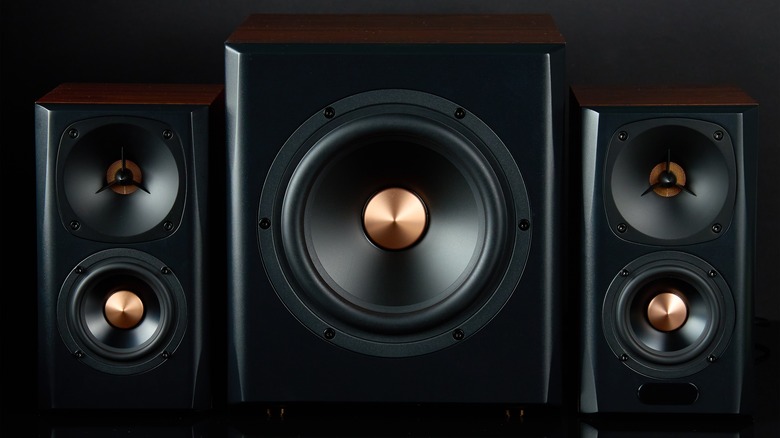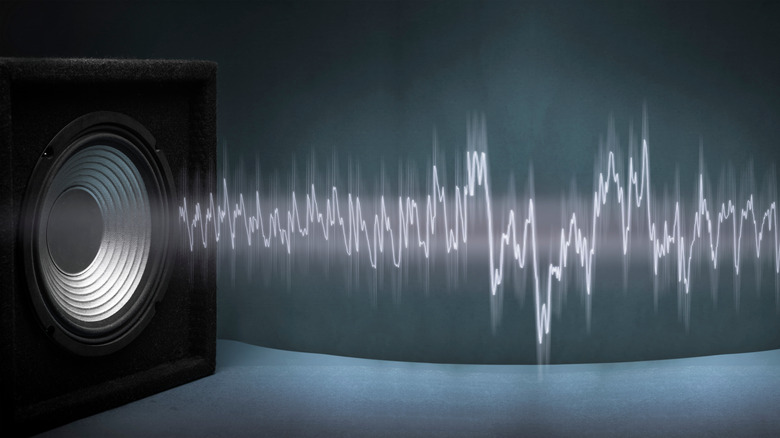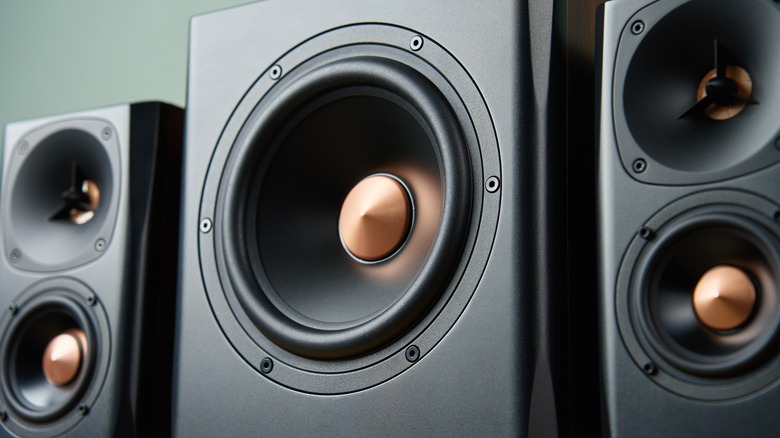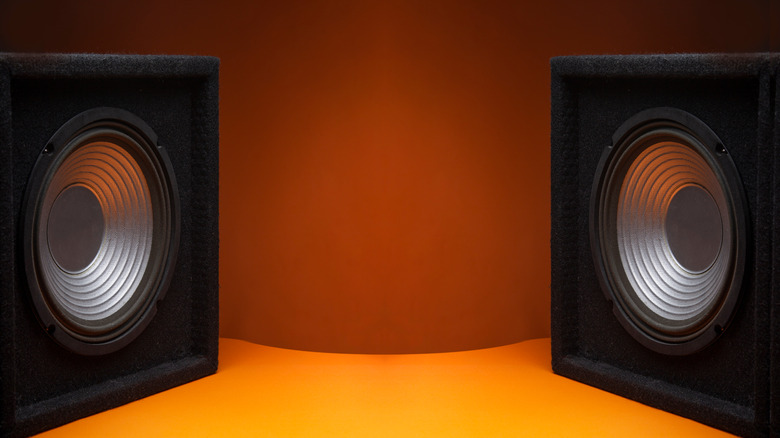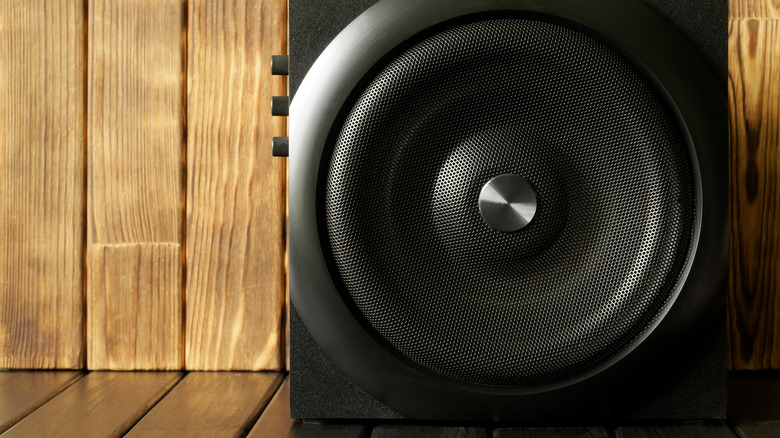Subwoofers Explained: How Do They Actually Work?
Speakers might all look somewhat similar on the outside, but there are many different kinds and all of them have different jobs. The physics behind what makes a speaker work the way it does can be deceptively complex. The size, shape, direction, and amperage of the signal that they receive can all have a profound effect on the kind of audio they produce. Each speaker in a sound system has a different job, and there are few that perform as unique a function as the subwoofer.
You might have installed one of these units in your car, your stereo, or coupled with a soundbar as part of a home theater system. Subwoofers are usually large, standalone units that provide a distinctly visceral addition to the sound profile of your audio. You don't just hear the low-end, you feel it resonating through your entire body.
Anyone who has ever experienced this knows the feeling. But you might have wondered how these speakers actually work. What is their exact function, how are they designed, are there different kinds, and what is the optimal place to put one to maximize the experience? Like with all sound, it ultimately boils down to directing the transference of vibrations.
The subwoofer's function
So what is it exactly that a subwoofer does? Well, to understand that, you first need to understand how audio frequencies work. All sound is composed of vibrations in the air and the surrounding environment. These vibrations are then interpreted by the human ear and then translated by the brain. They exist across a spectrum of high tones, mid-tones, and low tones. Think of a violin, a cello, and a standing bass. The sound from the first instrument is sharp and fleeting, while the sound from the second and third is deeper and more resonant. You can make music with a violin alone, but you need a cello or a bass to fill out a string quartet. This is because low-end audio brings balance to the overall sound.
Audio professionals have terms that break these categories into more precise subcategories. From high to low, they are brilliance, presence, higher midrange, midrange, lower midrange, bass, and lower bass. The subwoofer's job is to produce frequencies in lower bass. The deepest registers of sound are slightly different from the others. Regular speakers can produce bass, but they struggle with lower bass frequencies. These require their own dedicated speaker to be adequately replicated. Not only that, but this speaker has to be designed in a very specific way.
How a subwoofer is designed
Part of the reason that other speakers aren't as good at producing lower bass registers as a subwoofer is that they aren't designed for it. There are several different ways to set up basic bookshelf speakers depending on how many you have, the shape of the room, and whether you're trying to set up directional audio. But all of these speakers fire outward, into the air toward the listener. Subwoofers are different.
Subwoofers are traditionally placed on the floor. This is because the low-end audio actually travels better through the floor and walls of a room than it does through the open air. They are also generally much bigger and require a lot more power. "Although you can hear the bass on a regular speaker, only a full-range subwoofer will make the floor move because it can project frequency ranges between 20 and 200 Hz," says Bose, one of the best speaker manufacturers on the market. "The mechanics inside that produce the sound include their differently sized drivers or woofers, which range from 8 to 16 inches in diameter."
Some subwoofers fire outward, across the floor, while others fire directly down. Soundbars and other all-in-one audio solutions often have separate subwoofer speakers positioned at the bottom of the unit. But in all of these instances, it is the solid surfaces holding the subwoofers that carry the sound. This is why low-end audio often broadcasts more cleanly through hardwood floors than carpeted ones.
Active vs. Passive subwoofers
Now that you know what a subwoofer does and how it works, it's also important to note that there are two different kinds of them: Active subwoofers and passive subwoofers. The main difference between these two comes down to the way they receive power.
Passive subwoofers are powered by an external amplifier or A/V receiver. These are usually significantly less powerful than their active counterparts, although they still add significantly more to the range of sound than having no subwoofer at all. They can also be quite convenient in certain instances, as they are often compact and take up less space.
Active subwoofers are usually the better-sounding alternative, however. They typically have their own power source and their own dedicated amplifier. Having all of this in the same enclosure means that they require their own AC adapter, but it also means that they're more powerful as they don't have to share resources. They also tend to be more fine-tuned, as their built-in amplifier should be designed specifically for low-end sound.
Where a subwoofer should be placed
The last thing to know about subwoofers is where to put one when you have it. Setting up a soundstage is more complex than simply plopping your stereo on a shelf and piling your speakers wherever you have space. You have to place each speaker thoughtfully if you want to make the most of your stereo. This goes for the subwoofer as well. There are a couple of competing theories about the best way to do this, however.
Since low-end sound moves through the floor and walls, placing a subwoofer in the corner of a room can actually amplify this effect. Sounds like a good idea, right? Not quite.
Polk Audio actually claims that you should avoid walls and corners because that amplification actually muddies the low end, making it sound boomy and distorting clarity. Axiom Audio had similar notes but mentioned that the particulars are a bit more complicated than that. The amplification of low end can be influenced by a number of factors. The size and shape of the room, the power of the subwoofer, and even the material that the walls are made of can all play a role in the way low-end frequencies are transmitted. "Typically, though, I would only recommend it for smaller subwoofers where you wanna boost the output or amplify it a little bit because typically, that corner loading is going to give you more uneven bass than even if you pull the subwoofer out two or three feet from that corner."
